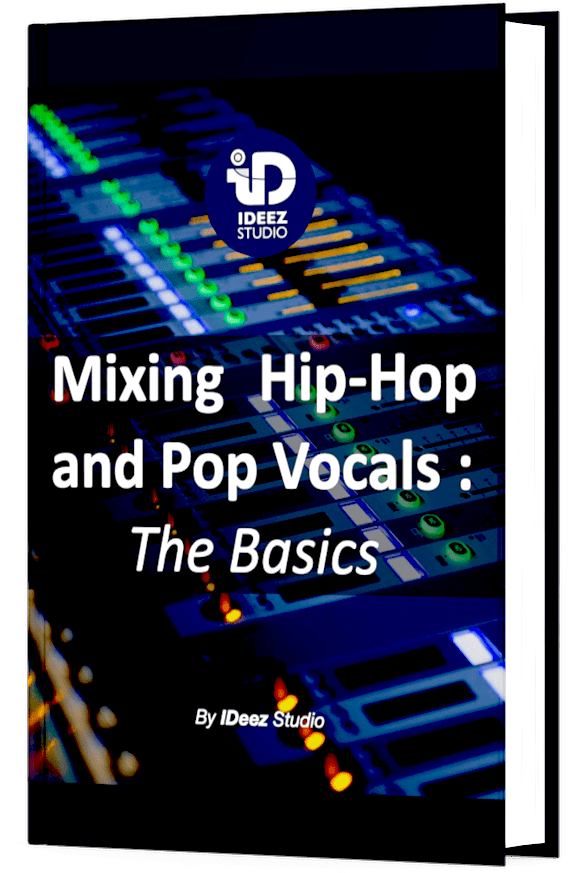Nowadays, there are a lot of plugins designed to enhance the low-end. But how do bass enhancement plugins actually work? Do they use a specific technology? Is there a common algorithm for all these plugins dedicated to low-end boosting? I tell you everything you need to know in this article!
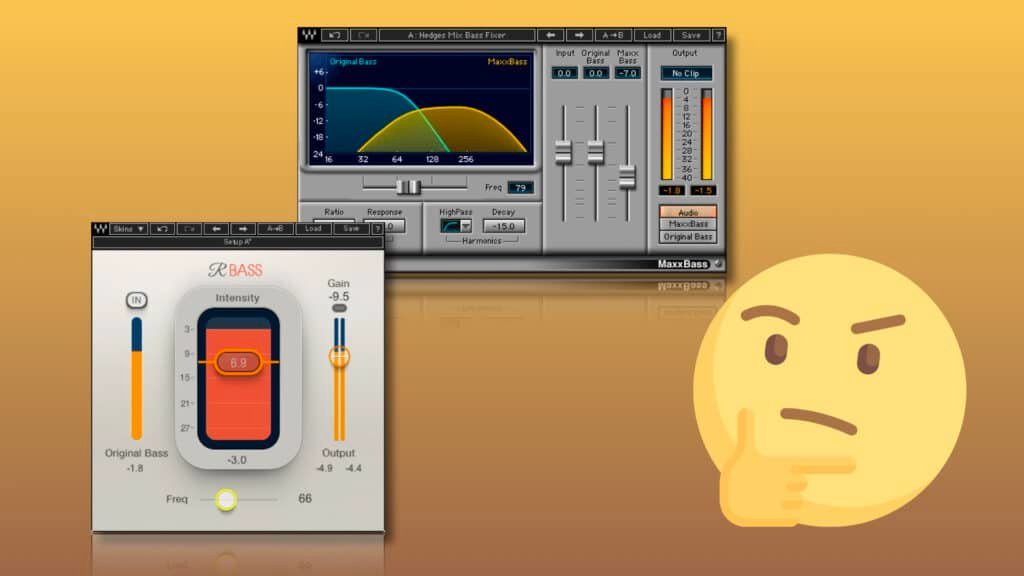
To improve the bass range of an audio source, bass enhancement plugins use a principle of generating harmonics through saturation to make the targeted bass area richer, more powerful, more robust and more accurate in the mix.
This means that these bass enhancement plugins do not directly boost the frequency targeted by the user. It is the harmonics located just above the targeted frequency range that will be generated by the plugins and that will create a feeling of power in the listeners’ ears.
Although it may seem counterintuitive to many music mixing enthusiasts, generating frequencies higher than the fundamental creates a signal that will be perceived as larger and more imposing to the brain. Obviously, these higher frequencies, which are usually in the low-mid range (250 – 500 Hz), must be harmonics of the fundamental frequency. This is always the case with a bass enhancement plugin.
The bass enhancement principle therefore relies on human perception of sound to give a low-end boost to the mix. But technically, what is going on inside these plugins?
Need a professional sound engineer specializing in pop and hip-hop mixing ? Great! Take a look at our services and let’s blow up your career together!
Let’s start now!
What bass enhancement is NOT
For a better understanding of what will follow in the rest of this article, it is essential to know what bass enhancement is not.
Bass enhancement can be confused with two other audio processing techniques: sub generation and simple bass boosting. Which are totally different from bass enhancement both in the way they work and in the way they sound.
The principle of sub generation allows to target the fundamental and to generate the harmonic located just below this fundamental frequency. This technique can be very efficient in electro or hip-hop music but you should certainly not abuse it to avoid pitfalls in mastering.
The bass boost principle is much more simplistic. It works like an EQ. A frequency is targeted by the user and can be boosted more or less loudly depending on the needs. Some tools are very efficient as bass boosters, it is the case of the Pultec EQP-1A for example.
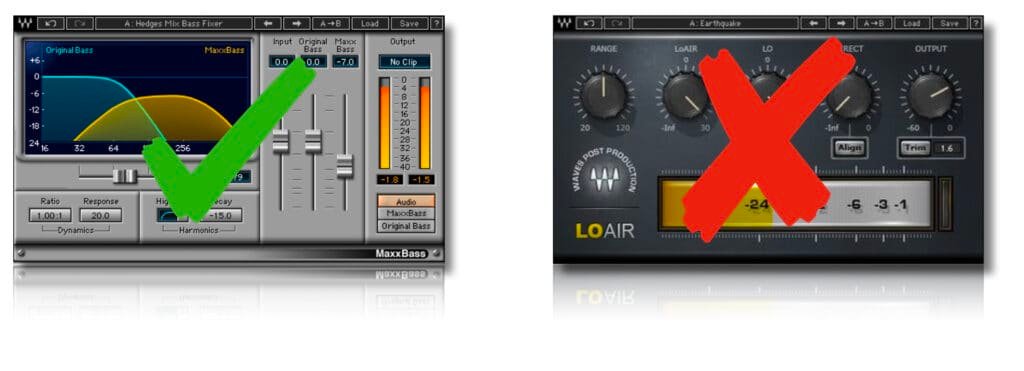
How do they work?
In most cases, this harmonic generation operation, which is actually very simple although it seems quite complex, is done in parallel. This is the case for example with MaxxBass by Waves, which remains the most famous plugin in the field of bass enhancement.
These plugins are able to separate the input signal in two: one remains as it is (the original bass), the other is processed by the plugin. The two signals are then added together at the output to produce a bass that is supposed to sound more robust after process. But what exactly is the processing applied to the parallel signal? The answer is simple: saturation.
Saturation: Quick Reminder
Just to remind you, saturation is not necessarily what you hear on rock guitars. Indeed, in audio, saturating an audio source is simply creating harmonics. This harmonic production can be subtle, as it is the case for bass enhancement. But it can also be more aggressive, like an electric guitar.
In visual terms, saturating an audio source means going from this:

To this:

It is important to note that this example represents only a basic sinusoidal waveform. The waveforms that result from a musical mix are obviously always more complex.
By the way, what happens to this waveform when it is saturated? Here is the answer:

As you can see, a saturated wave for some reason “squares off”. This explains why you are likely to hear this saturation when you push the gain of your microphone too far, or when your mix exceeds 0 dBFS. The wave is crushed, which creates harmonics.
Saturation, in audio, can be this…:
As well as it can be this:
Through bass enhancement plugins, the saturation is very often subtle because the purpose of this kind of tool is not to hear the effect of the saturation.
Indeed, the objective is to give a feeling of power at the bottom of the spectrum. A small amount of saturation is necessary for this purpose, especially with low frequencies.
Technical Process
But what exactly happens to the bass when it enters a low-end enhancement plugin? What are the exact steps in this type of processing? That’s what I’m going to explain to you in the rest of this article!
Here’s first a diagram that will help you understand how this technology exactly works:

And here are all the steps of the way bass enhancement plugins work. Note that this process reflects a generality and not the exact process of all bass enhancement plugins.
- The signal enters the plugin and passes through a volume fader to adjust the gain before the bass enhancement process.
- The plugin allows the user to choose the target frequency. Which should ideally be around the fundamental frequency of the song.
- The low-end enhancement tool splits the signal in two. On one side (upwards on the diagram) the original signal, which will pass through a low-pass filter to keep only the low frequencies. And on the other (downwards) the signal that will be the source of the bass enhancement.
- The first processing to be added to this signal (whose target frequency has been determined beforehand) is saturation. Harmonics are created by this process.
- But this saturation must be done in a certain frequency range to keep control over the bass. That’s why a band-pass filter is applied. This filter is usually located in the low-mid range (between 200 and 500 Hz).
- In order for the balance to be adjusted between the original bass and the processed signal, each passes through a volume fader. The second option is to make it join a mix knob (from 0 to 100% wet).
- This mixture of original and saturated bass is finally passed through a volume fader, to adapt the output gain to the input gain.
General Process and precisions
As you are probably beginning to see, bass enhancement is actually a very simple process. It simply combines the original bass of the input signal with a saturated signal whose energy is in the frequency range just above the fundamental.
Now you might ask yourself this: If all bass enhancement plugins use this technology, why do they sound so different? Because Denise’s Bass XL will never sound like Waves’ RBass. Just like Melda’s Mbassador will never sound like bx_subfilter,… All give different results. But why?
Well, you have to realize that every bass enhancement tool uses a processing that always differs slightly from the others. UAD’s Precision Enhancer, for example, allows you to choose between 4 saturation modes which are very different from each other. Another example is MaxxBass. One of the parameters of this plugin allows to adjust the compression applied to the saturated signal, which completely changes the sound.

Applications
Everything that gives energy in the low end of the spectrum of a mix is likely to be processed by a bass enhancement plugin: kicks, basses, 808s, synths,… All these elements can be used!
Adding bass enhancement to certain elements of a mix can completely change the final sound of a track. It is of course advisable to use this principle of bass enhancement sparingly.
You should only use this kind of processing when your mix needs it, not just as a matter of principle. You should always be aware that too much bass can be a problem when it comes to mastering. The bass can very quickly “eat” the mix.
The bass enhancement is not to be overused!
Here are some examples of bass enhancement on several elements of the mix..:
1. Kick Drum
Bypassed
Active
Besides the fact that this kick is now much more powerful in the lower end of the spectrum, it also allows the whole mix to be more balanced. Which is always the ultimate goal of a mix: balance. This bass enhancement was made with MaxxBass.
2. Bass
Bypassed
Active
Thanks to this low-end enhancement on the bass (Rbass), the bass-guitar duo immediately becomes much more robust.
3. Synth
Bypassed
Active
This somewhat skinny synth now has a lot more body thanks to the Enhancer Hz effect and will probably fit much better in the mix.
The best plugins for bass enhancement
Let’s face it: some plugins are much better than others in their field. That’s why I thought it was important to give you a very short list of the best plugins in the field of bass enhancement.
ℹ️ Need a complete list of the best plugins to make your low-end more powerful? It’s all here: Top 10 Plugins For Powerful Low-End
1. Waves RBass
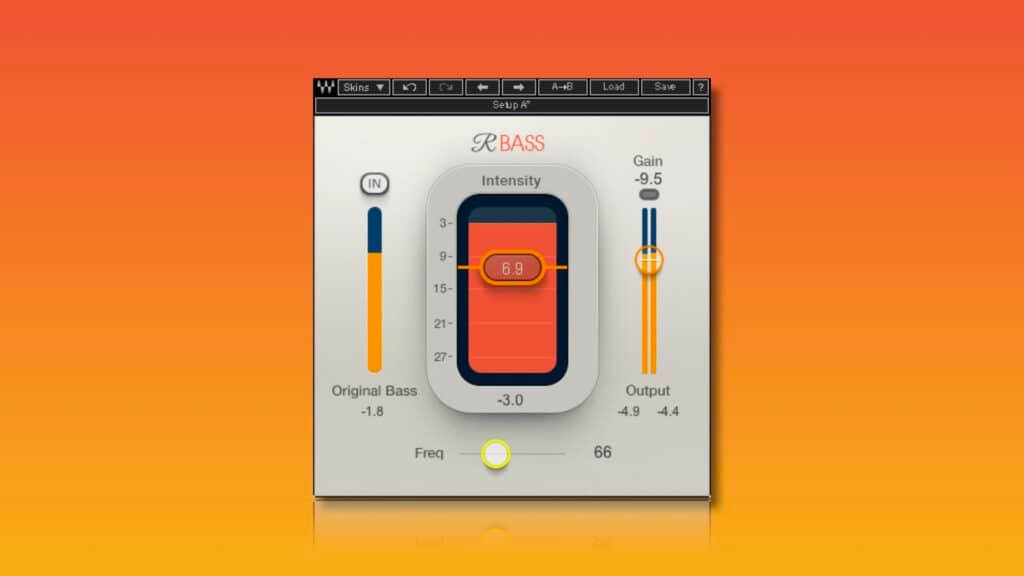
RBass is in my opinion the number one in the field of bass enhancement and will remain so for a long time to come. It has everything to please both amateurs and professionals: ease of use, efficiency, sound quality, low CPU usage,…
Despite its small lack of parameters and therefore of precision in processing, Waves Rbass is a plugin that every producer, musician and sound engineer should have at hand. Its effect is breathtaking.
2. brainworx bx_subfilter
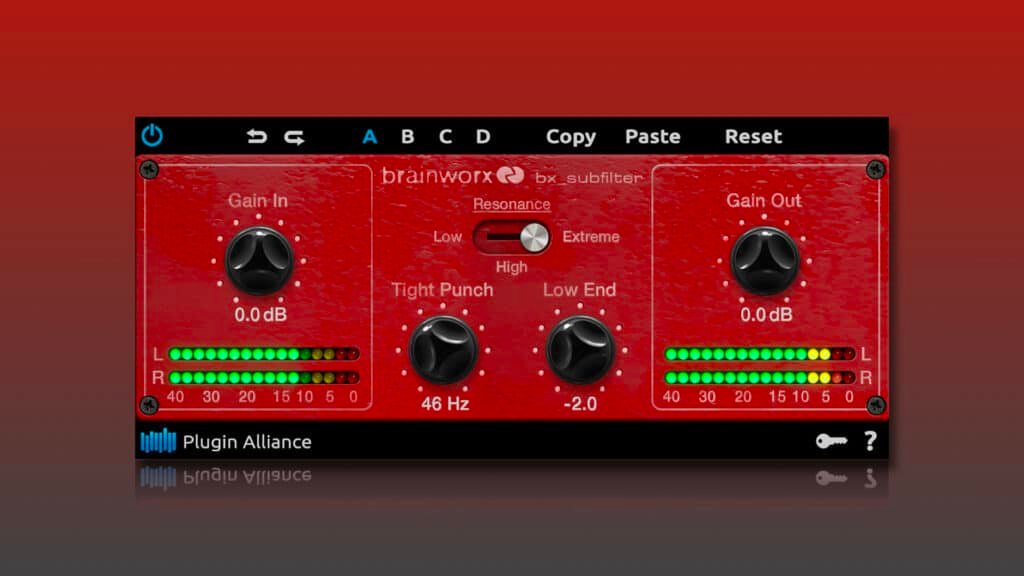
bx_subfilter is not the most versatile bass enhancement plugin in the world, far from it. But its effect on kick drums is so magical that it fully deserves its #2 spot.
It works especially well on organic kick drums. The energy it adds will revitalize your whole mix.

3. Denise Bass XL

Bass XL scores a lot of points for combining ease of use, intuitiveness and parameter accuracy. It is the only one in its field that goes so far in processing precision.
The result you can get with this high quality beast is really unique. You can add impressive harmonic richness to your mixes by using Bass XL wisely.
Need a professional sound engineer specializing in pop and hip-hop mixing ? Great! Take a look at our services and let’s blow up your career together!
Let’s start now!
Conclusion
All bass enhancement plugins work in much the same way: combine the original bass with a saturated bass to create more energy, power, robustness and character.
But not all bass enhancement plugins sound the same. So some will be more effective on kick drums, others on basses or 808s,… It also depends on your taste. It’s up to you to try each of these plugins and make your mixes even more powerful than they are!
If you have any question about bass enhancement or about anything in the field of music mixing, please contact me, I’m always very happy to help!
My favorite tools for mixing pop and hip-hop music:
Plugins
In the field of auto-tune, I’m convinced that nothing’s better and more efficient than Antares Auto-Tune Pro. As for the EQ’s, FabFilter Pro-Q3 and Slate Digital Infinity EQ are, in my opinion, the best tools. For compression, I have 2 favorites plugins: Waves RComp and UAD EL8 Distressor.
As for reverb, I’m a big fan of the Soundtoys Little Plate, but generally, I go for the Valhalla VintageVerb for its versatility. I also love the Arturia Rev PLATE-140 and the UAD Pure Plate for its organic side.
Headphones
The closed headphones I love and will always love using for mixing pop and hip-hop music are the Beyerdynamic DT-770. As for the best open-back headphones, I use the Sennheiser HD600 headphones, and I’m really happy of them!
Monitors
Having a pair of Yamaha HS7 in its studio or home studio is always cool for more excitement while listening to your mixes. The Adam Audio T7V monitors are also super accurate. In my studio, I also have a pair of Genelec 8030 for their reliability.
Hardware gear
For anyone who wants to start using hardware in their mixes, I always recommend these 2 units from Klark Teknik: the EQP-KT and the 76-KT. Don’t forget to use good converters, such as the Apollo interfaces. This is essential for a good rendering.
Related Articles:



